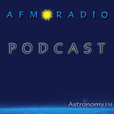
Summary: Show Notes for the 12th of February 2013 (GMT) Title: Sophia's Quasar Hosts: Sophia, Jesse, Lianne, Paul Tonight we welcomed a new YorkUniverse host, Sophia Naser, to our team as she discussed possible new theories on what Dark Matter might be. Lianne Manzer was back after a long hiatus! We chatted This Week in History, Curiosity, Chris Hadfield, the 50th anniversary of the first quasar, and much....much more! happy birthday Darwin! This week in space/astronomy history: 12 February 1809 - Darwin is born! 11 February 1970 - Japan becomes 4th nation to indepently put a satellite, Osumi (http://en.wikipedia.org/wiki/%C5%8Csumi_(satellite)), in orbit 11 February 1984 - STS 41-B Challenger (http://en.wikipedia.org/wiki/STS-41-B) becomes first shuttle to land at Kennedy Space Centre 10 February 1990 - Galileo (http://en.wikipedia.org/wiki/Galileo_(spacecraft))passes by Venus on its way to Jupiter 11 February 2010 - NASA SDO launched Solar Dynamics Observatory (http://sdo.gsfc.nasa.gov/), check out highlight video (http://youtu.be/dVCe5elYvu0) Breaking News: LandSat Data Continuity Mission (LDCM) Launch - http://ldcm.nasa.gov/ (http://ldcm.nasa.gov/) Land-sat Data Continuity Mission (LDCM) spacecraft launched Monday 11 February 2013 at Vandenberg Air Force Base, Calif. at 10:02am PST. (1pm EST) Collaboration between NASA and the U.S. Geological Survey Continue the Landsat Program's 40-year data record of monitoring the Earth's landscapes from space LDCM is in a polar orbit, over north and south poles. It takes 100 mins to loop over poles. Cover whole globe every 16 days. ~13 orbits a day. The Landsat Program provides repetitive acquisition of high resolution multispectral data of the Earth's surface on a global basis. Monitors the earth to see how the landscape changes. How climate change and land use is changing our planet. This is the only record of how our land is changing over time. Observes in in visible and Near IR and shortwave IR. Observes OLI Urban sprawl forest growth and loss, changes in farmland, and melting of glaciers. Data is available open source. So used for science. Free and open access to data! Look at large scale changes over the globe! continue to obtain valuable data and imagery to be used in agriculture, education, business, science, and government. Great Photos: http://www.flickr.com/photos/nasahqphoto/8465970134/in/photostream (http://www.flickr.com/photos/nasahqphoto/8465970134/in/photostream) https://twitter.com/NASAKennedy/status/301035221053227008/photo/1 (https://twitter.com/NASAKennedy/status/301035221053227008/photo/1) Siding Spring update As a brush fire tore through the Warrumbungle National Park, the Siding Springs Observatory was forced to close its doors. It even had many structures fall victim to the fire, though none of the telescopes were harmed. Just a few short weeks after the observatory’s run-in with the fire, the site will allow the telescope operators access to the observatories. Amanda Bauer has been keeping us all up on the details at her blog: http://amandabauer.blogspot.ca/2013/02/siding-spring-obs-fire-burn-scars.html (http://amandabauer.blogspot.ca/2013/02/siding-spring-obs-fire-burn-scars.html) See the Official Website for updates: http://rsaa.anu.edu.au/observatories/siding-spring-observatory (http://rsaa.anu.edu.au/observatories/siding-spring-observatory) Close Approach of Asteroid 2012 DA14 Friday, February 15, 2013, is the close flyby of Near Earth Asteroid 2012 DA14 (http://www.universetoday.com/99660/in-two-weeks-this-50-meter-asteroid-will-buzz-our-planet/), passing just 27,630 kilometers (17,168 miles) from the surface of the Earth. About 50 meters (164 feet) in size marks the the first time there has been passage of an asteroid this close that we’ve known a year beforehand it passes within the ring of geosynchronous satellites orbiting the Earth there’s no danger. Friday,
